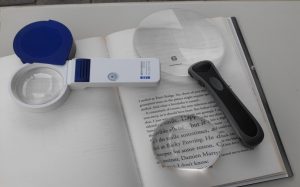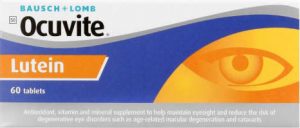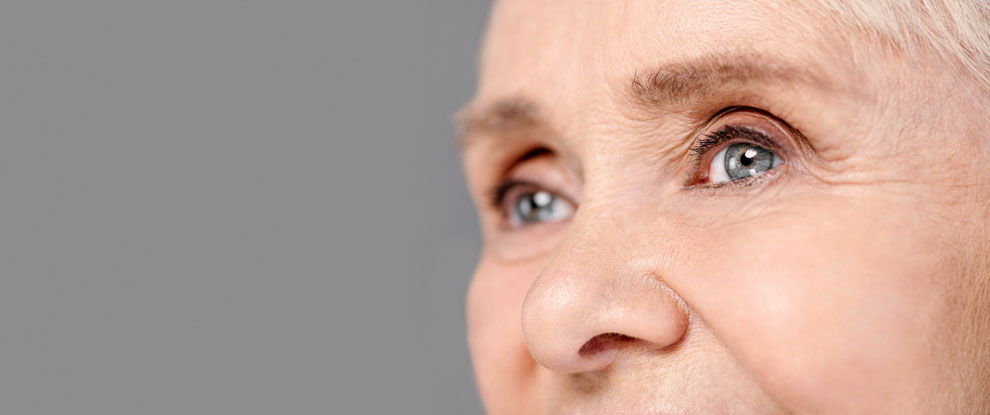What is AMD?
 AMD is an eye disorder that causes gradual central vision loss but spares peripheral vision. It is an incurable disease and the leading cause of severe, permanent vision loss in people over 60. AMD affects the macula which is responsible for our sharpest vision. It will therefore affect our ability to read, recognise faces, drive, watch television, use our digital devices and perform any other detailed visual task.
AMD is an eye disorder that causes gradual central vision loss but spares peripheral vision. It is an incurable disease and the leading cause of severe, permanent vision loss in people over 60. AMD affects the macula which is responsible for our sharpest vision. It will therefore affect our ability to read, recognise faces, drive, watch television, use our digital devices and perform any other detailed visual task.
Symptoms
Symptoms usually develop gradually and without pain:
- Visual distortions – straight lines might seem bent
- Reduced central vision in one or both eyes
- The need for brighter lighting
- Increased difficulty adapting to low light levels
- Increased blurriness
- Decreased intensity of colours
- Difficulty recognising faces
- Blind spot in field of vision
Causes
No one knows want causes AMD but research indicates it might be affected by a combination of hereditary and environmental factors, including smoking, obesity and diet.
Risk Factors
- Age: AMD is common in people over 60
- Family history of AMD
- Race: AMD is most common in Caucasians.
- Smoking
- Obesity
- Cardiovascular Disease
- Sun exposure
Diagnosing MD
It is important to have an annual eye examination and report any visual changes. Your eye care professional can conduct a variety of tests to diagnose AMD.
One such test is the Amsler grid which consists of a grid of straight lines with a dot in the centre. Your optometrist will ask you to identify lines or sections on the grid that appear blurry, wavy or broken. You can also use this test at home to monitor your condition.

AMD can also be detected with Fundus photography where a digital image of the internal eye is taken to detect anomalies associated with eye diseases.

Treatment
Although there is no cure for AMD, there are various low vision aids available to make life easier. These can range from a simple magnifying glass to a smartphone app.

Medical treatment is focussed on slowing down the progression of the disease. Nutritional supplements containing antioxidant vitamins can reduce the risk of dry AMD progressing to wet AMD e.g. Ocuvite with lutein.

AMD is not preventable, but it is possible to diagnose the condition early with regular eye exams. Early treatment can help slow the disease progression and minimise vision loss.


